8 Different Types of Engineered Wood Flooring (With Pictures)
-
Pete Ortiz
- Last updated:
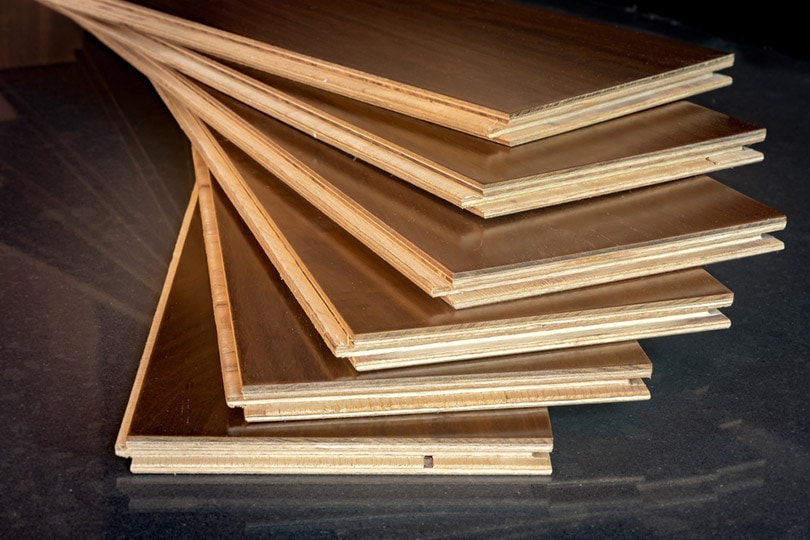
We’re not interior designers, but we’ll tell you this much—understanding the different aspects of flooring is important if you wish to create a functional room. It could make or break your whole space, even if you did everything right from the jump.
Owing to its significance and high consumer demand, we’ve always found ourselves in a market flooded with different materials. And although most of those materials are good, some are, for lack of a better word, substandard.
Fortunately for us, engineered wood doesn’t fall in the latter category. It is among the best on the market, and you can tell just by looking at how popular it is. But then again, this is not a popularity contest—it’s about which material delivers what’s promised, including offering value for money.
The 8 Types of Engineered Wood Flooring
Technically, there isn’t one specific type of engineered wood flooring. They are usually classified based on different things, but some of them fall into more than one category.
- Wood species
- The pressure applied during production
- Wood texture
- Installation method
To avoid confusion, we like to start with the method of installation, as this usually narrows down our options.
Based on Method of Installation
1. Click-Lock
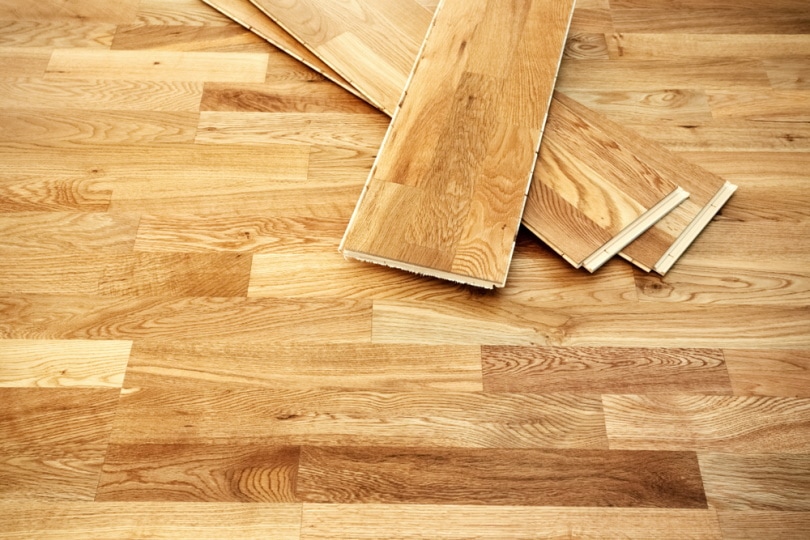
Most of the wood flooring options that we currently have in the market apply this method during installation. The flooring planks have features that are referred to as “tongues and grooves”, which are clicked together to create a floating floor.
The floating floor, for those wondering, is a type of flooring that floats above the substrate.
This method is cost-effective, easy to install (especially if you’re an enthusiastic DIYer), and easy to remove. But you have to be 100% certain that the subfloor is level before installing the planks. Otherwise, you won’t get an elegant finish.
- Cost-effective
- Easy installation
- Has an elegant finish
- Easy to remove
- Requires a level subfloor
2. Nail-Down
The nail-down installation method is not that popular, probably due to the amount of work that has to go into it during installation and repairs. The only people who prefer it are homeowners who realize that they’ll have to attach their engineered flooring to a wooden subfloor to get a perfect finish and eliminate the possibility of gaps forming. And that attachment can only be made possible through nailing.
To prevent the planks from moving after installation, due to temperature changes, you’ll have to add a little glue.
- Will deliver a perfect finish
- No gaps between planks
- Strenuous installation process
- Not easy to repair
- Sensitive to temperature
3. Adhesive
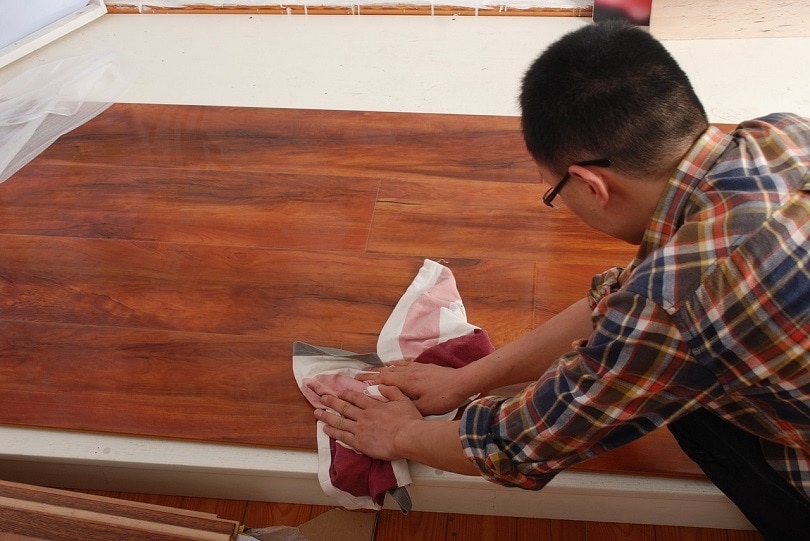
As you might have guessed, this method involved using some type of glue to make sure the joints were well connected. The adhesive installation method might not be effective on subfloors made of wood, but it will go the distance if you’re applying it on those made of concrete.
With adhesive flooring, you’ll never hear creaks, deal with gaps in between planks, struggle with installation, or feel like the floor is unstable.
But if you’re looking to install adhesive-engineered wood flooring, be mentally prepared for the work ahead when it comes to repairs. Removing and replacing those planks has never been easy.
- User-friendly installation process
- No creaking
- Very stable
- No gaps between planks
- Not easy to repair
Pressure Applied Engineered Wood
4. High-pressure engineered wood
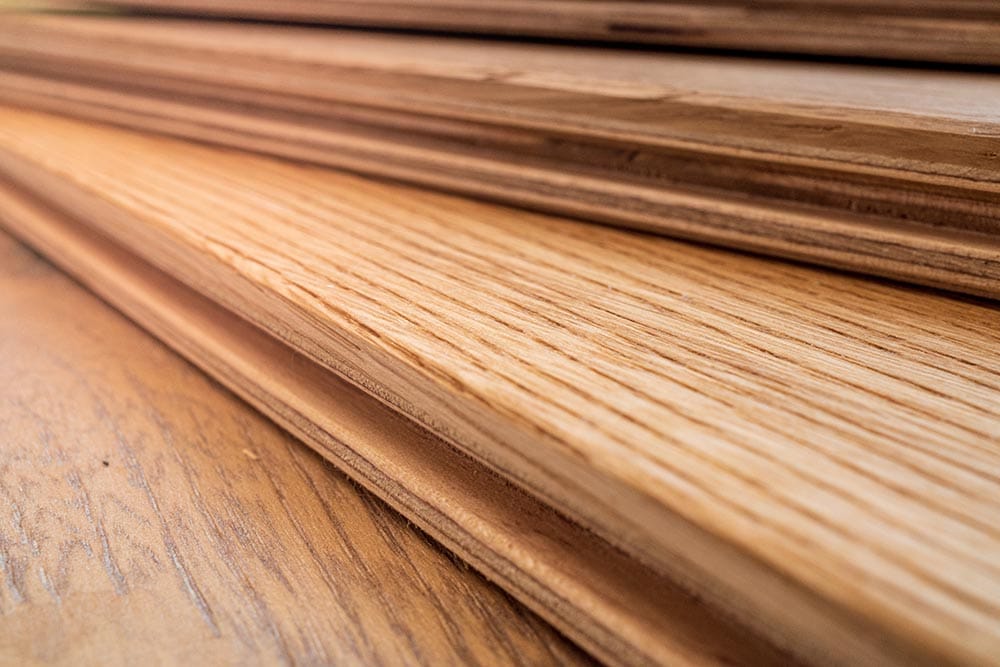
These types of installations normally have a very high resistance to water and fire chemicals, due to their solid build. And they often deliver in the durability department, courtesy of the processing method used in production.
To produce a high-pressure engineered board, brands usually saturate multiple compact layers of the material in a synthetic polymer called Phenol Formaldehyde Resin. For the process to be successful, it has to be done under intense pressure.
The only discouraging thing about installing high-pressure engineered wood is the cost. Besides being higher than that of the direct-pressure engineered board, the costs also increase per square meter of installation.
- High resistance to water and chemicals
- Sturdy
- Durable
- High installation costs
5. Direct pressure-engineered wood
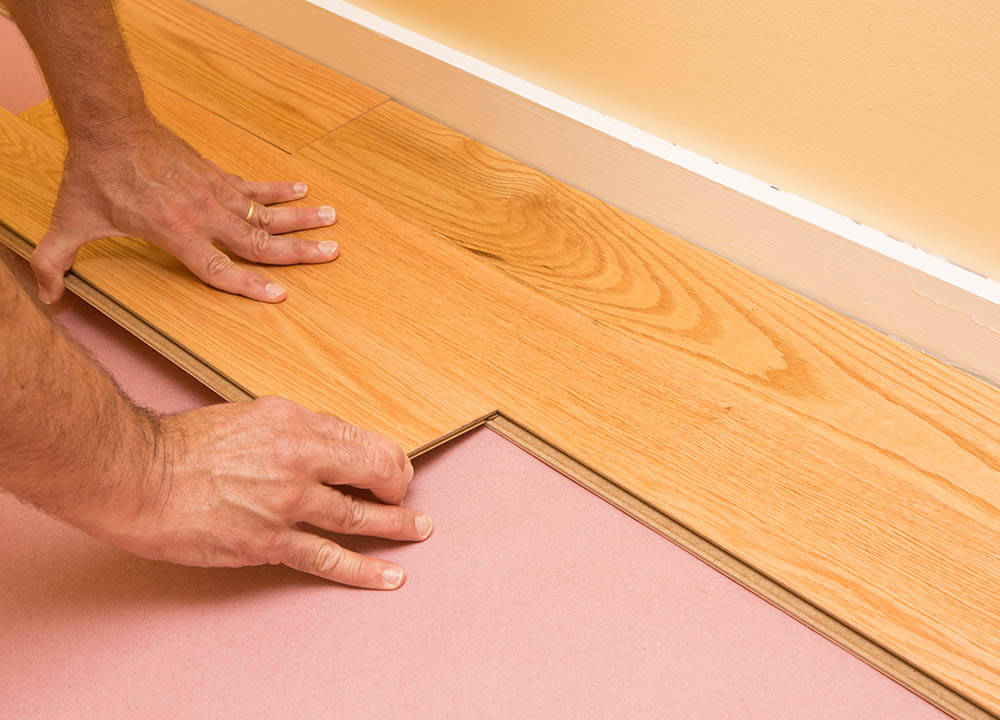
The difference between these boards and their counterparts is the fact that their layers are only infused once. And as a result, the bonds between them are usually weaker, making the material more susceptible to wear and friction.
Direct-pressure engineered wood is a great flooring option for residential buildings since it cannot handle the high traffic experienced in commercial buildings. Also, as implied earlier on, it’s less costly.
- Not as costly as high-pressure engineered wood
- Great for residential buildings
- Susceptible to tear and friction
- Cannot handle high foot traffic
Engineered Wood Texture
Nobody said you couldn’t have the best of both worlds when it comes to flooring. You can install an engineered wood floor and give it a texture that mimics that of the original material. But the texture you choose to go with will depend on the area you plan on installing it.
6. Distressed Texture
Distressed flooring has a texture that’s not only dramatic but also irregular in color, with prominent knots. It’s because of this look that things like dents and scratches will kind of blend seamlessly into it.
Unless you’re the homeowner who knows its original form everyone else will just think those rugged vibes are part of the design! The other benefits include low maintenance, enhanced durability, and versatility.
Sadly though, since the material is machine-made, the carbon footprint produced is significantly larger.
- Versatile
- Durable
- Low maintenance
- Hides dents and scratches
- Large carbon footprint
7. Wire Brushed
If you’re not into rustic looks, particularly those that make homes look more traditional, you could settle for wire-brushed boards. They are boards that have been treated with oil after being lightly sanded. Your floor will still look authentic and be good at concealing scratches or damage.
Can the floor withstand wear and tear? Absolutely. That’s why it’s normally recommended for homes that have lots of foot traffic and pets. That being said, if you’ve never enjoyed cleaning, you should go with a different floor option—this one will be quick to collect dirt.
- Makes your home look traditional
- Conceals scratches and damage
- Can withstand wear and tear
- Ideal for pet owners
- Quick to collect dirt and grime
8. Hand Scraped
The scraped option is ideal for those looking for that ‘old’ or ‘worn’ look. You know, the kind of look that leaves you thinking, “could this be a new installation or an old one?” It brings authenticity to the table, and that’s definitely a good thing. We also liked how durable its finish was, but disliked the installation process—you’ll have to be a pro to install this one.
- Looks authentic
- Durable
- Difficult to install
Frequently Asked Questions
Does the thickness of the wood equate to durability?
No, it doesn’t. Just because the wood looks thicker than most woods doesn’t automatically mean that it will serve you for a lifetime. Durability is all about how much damage the wood can take and still look good. It’s often determined by the pressure applied while producing it too—if it’s high-pressure engineered, you know you’ve got something durable.
How do you get a sticky substance off an engineered wood floor?
The worst mistake that you could ever make is to use a sharp tool to get substances off the floor. What you’ll end up doing is damaging the floor and spending more money working on repairs.
When dealing with sticky substances, all you need is a detergent and an acidic cleaner. These two things will ensure the amount of scrubbing required is not too intense so as to damage your boards.
Are engineered floors biodegradable?
Regrettably, they are not. They pollute the environment just the same way plastics do. As a matter of fact, they could even be worse, seeing as some of them are often produced using chemicals that could easily compromise our immune and respiratory systems.
Final Thoughts
By now, you can tell that engineered wood flooring is the latest trend in town. We’re guessing you’re just as excited as we are that a lot of people are willing and ready to explore more options in the flooring market. Only invest after doing your due diligence, though, and you’ll never regret it.
Featured Image Credit: BILD LLC, Shutterstock
Contents




